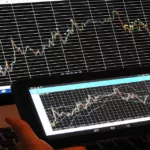To most Americans, the words “electric car” are synonymous with green, or zero carbon emissions, and fuel economy. Venturi, a luxury electric vehicle manufacturer in France, is looking to add a third word: speed.
The boutique automaker recently announced that it plans to build the most powerful electric vehicle as part of its “Venturi Global Challenges” initiative. States Gildo Pallanca Pastor, CEO of Venturi, “… by designing the most powerful electric vehicle in the world, we are consolidating our lead in the field of electric propulsion, but perhaps more importantly, we are innovating in order to optimize energy efficiency, one of the greatest challenges facing not only the automobile industry, but society in general.”

Image courtesy of Venturi
Venturi is teaming up with Ohio State University in this latest venture. The partnership is not surprising: Roger Schroer, who is a test driver at the Ohio-based Transportation Research Center, drove the last Venturi speedster, the “Venturi Jamais Contente” (VBB-2.5) back in 2010. In it, Schroer reached a top speed of over 307 mph. He is the current holder of the Fédération Internationale de l’Automobile (FIA) world record.
Virtually no detail of the third-generation Venturi Jamais Contente, or the VBB-3, has been released. The automaker plans to unveil the super car to the public during Speed Week in August on the Bonneville Salt Flats in Bonneville, Utah. In September, Venturi will start speed trials with the FIA. The goal is to achieve 372 mph. Interestingly, the company is already looking forward reach 434 mph in 2014 and even higher speeds in later years.
Besides its VBB race cars, Venturi has developed several more pedestrian electric vehicles. The Venturi America is a “high voltage” off-road buggy whose electric motorand battery combo generates over 300 horsepower and 280 pound-feet of torque. Range is approximately 186 miles between charges. In “Mission 04“, Venturi powered an all-electric French Citroen Berlingo SUV as it made a 3,000 mile trek way across eastern Africa. The challenging journey (over 65 percent of Africans have no access to electricity, for example) was documented on a special website.





